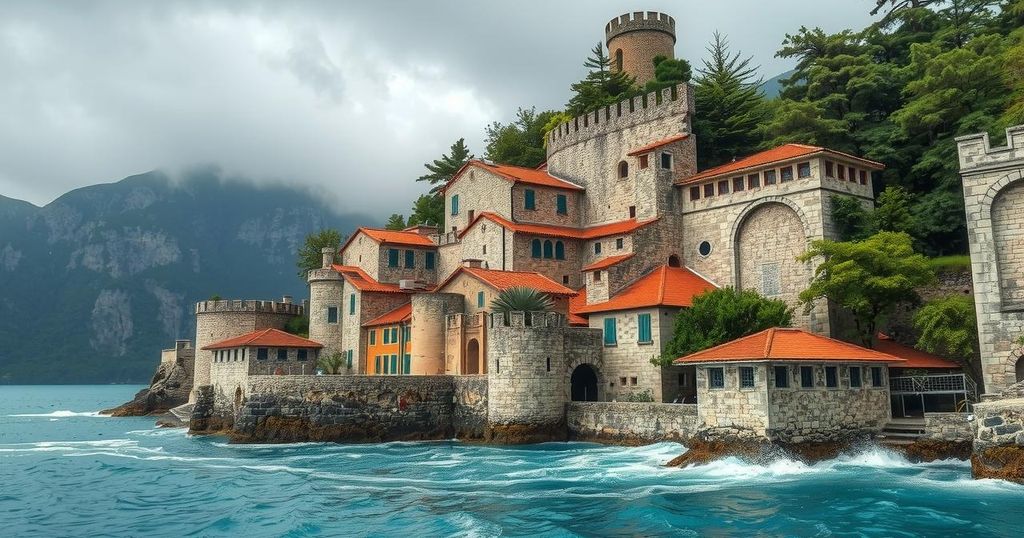A study indicates that nearly all Natural World Heritage Sites will experience extreme climate events by 2100 under high-emission scenarios. Of 250 sites evaluated, 248 may be affected, especially in tropical regions. Urgent protective measures are recommended, with a focus on biodiversity-rich areas that face heightened risks as a result of climate change.
A recent study published in the journal Communications Earth & Environment reveals concerning projections regarding the vulnerability of Natural World Heritage Sites (NWHS) to extreme climate events by the end of this century. Conducted by researchers from Peking University and the Chinese Academy of Sciences, the study assessed the potential exposure of 250 natural heritage sites under four distinct future climate scenarios. Alarmingly, under a high-emission scenario, nearly all of these heritage sites would face extreme climate events, with forest areas likely to experience the most significant pressures from complex extreme phenomena.
The research identified 14 NWHSs to prioritize for conservation efforts in light of their increased vulnerability in tropical regions. Of these, six sites are located in Africa, four in Australia, two in Brazil, with one each in the United States and Réunion Island. The African sites, which are expected to experience severe temperature increase, include the Manovo-Gounda St Floris National Park in the Central African Republic and Lake Turkana National Parks in Kenya, among others.
The study emphasizes that NWHSs—designated as having Outstanding Universal Value to humanity—are increasingly susceptible to extreme heat, heavy rainfall, and droughts due to climate change. By 2100, the exposure to these compounding climate events will correlate directly with greenhouse gas emissions. If global goals—such as those outlined in the Paris Agreement—are met, the exposure of these sites to adverse conditions may significantly reduce. However, under scenarios of high emissions, a marked increase in vulnerability is anticipated.
Furthermore, historical data from 2000 to 2015 illustrates that approximately 44.8% of NWHSs have already experienced extreme heat events. Projections indicate that nearly all NWHSs will likely face similar conditions by the century’s end. The rising pressures from climate change, alongside human activities such as mining and tourism, jeopardize the preservation of these vital ecological treasures.
Lake Turkana National Parks has been noted as particularly at risk, registered as a hazardous heritage site since 2018. A report from the United Nations Environment Programme (UNEP) underscores that within the next twenty years, climate shifts will likely result in increased flooding, as seen in prior years, posing significant threats to this region and urging collaborative efforts by Kenya and Ethiopia to mitigate these challenges.
The authors advocate for expedited measures towards carbon neutrality to aid in the preservation of NWHSs and achieve Sustainable Development Goal target 11.4, which aims to enhance efforts in safeguarding the world’s cultural and natural heritage.
Natural World Heritage Sites are recognized for their Outstanding Universal Value to humanity and demand concerted efforts for their conservation. Climate change significantly impacts these sites, subjecting them to extreme weather events, which complicate their preservation efforts. As greenhouse gas emissions rise, the risk and frequency of these extreme weather phenomena increase, making the protection of these sites a pressing global issue. Understanding how these variables interact can inform conservation strategies going forward.
The study underscores the urgent need for protective measures to preserve Natural World Heritage Sites in the face of escalating climate change. With predictions indicating near-total exposure of these sites to extreme climate events by 2100, strategic efforts directed at mitigating greenhouse gas emissions become essential. As global stakeholders work towards achieving sustainability goals, the protection of cultural and natural heritage is intrinsically linked to broader climate action initiatives.
Original Source: www.downtoearth.org.in






